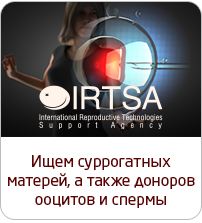New Method of Embryo Genetic Testing: Changing Fertility Treatment
I just got back from the 65th annual American Society for Reproductive Medicine (ASRM) meeting in Atlanta. After all the excitement of my plenary talk on the development of ultra HD surgery I had a chance to scour the exhibit hall and go to my choice of key breaking research presentations. One that struck my immediate attention was a new chip technology that could allow the testing of all 24 pairs of chromosomes on an embryo fast enough to make it part of our fertility treatment in vitro fertilization.
Here’s the abstract they presented (requires registration)-it was a finalist for a prize paper.
Why Genetically Test an Embryo? In IVF we join a sperm and eggs in the lab and let thee develop into embryos which are then transferred into the mother’s uterus. We learned over the last decade that perhaps the number 1 reason treatments are unsuccessful is due to “aneuploidy” or genetic abnormalities of the embryo. While these can come from the developing embryo itself or the sperm the vast majority come from the egg and are directly related to the age of the potential mother. Fixing this would revolutionize fertility treatments. We see in some women all of their eggs may be abnormal. While rates increase in the mid-thirties they are astronomical in a woman’s 40s.
The Tests: The technique of PGDwas developed to test embryos for lethal single gene genetic diseases (like CF or tay sachs etc). On the third day of development we open the developing embryo and take one its 6-8 developing cells out. This precious cell is tested for the gene to see if it has it or not. We have to get the results in 48 hours to catch the window where we need to replace the embryo into mom. Some interesting ethical questions about this test are here.
PGS - preimplantation genetic screening is different. Here we do the same biopsy but test for 9 or 11 chromosomes to see if the age related abnormalities are present (not a familial single genetic disease). The idea was that we could do the test and virtually guarantee choosing a normal embryo– guaranteeing pregnancy and eliminating miscarriage from these factors. But there was a huge problem–in addition to simple testing inaccuracies, we learned that embryos have mosaicism-not all of the cells are identical! In fact, we now know that embryos can have a few cells that are abnormal and “self correct” itself as it develops over the next few days. So when we test just a single cell we could pick up an isolated abnormality that will self correct. Or we could pick up one of the few normal cells in an embryo that is overwhelmingly abnormal and will never survive. This technique once thought to be revolutionary was shown in many studies to actually decrease overall pregnancy results. Most fertility centers have dramatically curtailed or eliminated its use for this simple screening idea. The current thought is that we would need the ability to test for many more chromosomes and to test more than a single cell for the technique to really change overall pregnancy rates.
Both PGS and PGD are offered at my fertility practice Gold Coast IVF but I really try to use it in just those patients who have genetic riks factors clearly identified - as opposed to centers who try to push this limited technique on everybody. We are intergrated the new chip technologies into practice now but again their use is not for everybody doing IVF!
The new research presented at ASRM–currently the testing of isolated chromosomes is via a technique called FISH. A newer version of this called cGH was promising, but takes many days to get a result. So for it to be used we have to biopsy embryo freeze it wait a week for the results (or more) and then put the embryos identified as normal back into the mother after thawing them a month down the road. The new technique called array cGH (aCGH) allows the testing of all chromosomes and gives a result in less than 24 hours. I had an opportunity to listen to the research presentation on its development and initial testing and spend some time with the head of the company who manufactures the chip answering my questions.
The company is called BlueGnome and they call the chip technology 24sure — more info here. Here is a link to a powerpoint presentation from the European Fertility Meeting ESHRE that traces in techical complex details (not for the layman) the other options.
Previous research on this method full chromosome abnormalities were diagnosed with a 6% error rate, but not structural abnormalities. taken into account. Thirty five embryos were tested -3 did not produced results (9%). Twenty one embryos were abnormal (65%) 10/11normal embryos were insered into the potential mothers. 95% of the abnormal embryos were confirmed by the old FISH technique which would have detected 70-80% Vof the abnormalities and missed the rest.
The new research presented: 6/55 tested embryos did not yield results (10.9%). 59% were abnormal One embryo classified by the new methods as normal had a trisomy 22 by FISH ( 5% false negative rate). 2 teed abnormal were normal by FISH ( 7% false positive rate). The total error rate for full chromosome abnormalities was (6%). Overall aCGH seems to detect about 20% more abnormal embryos than FISH with a 6% error for full chromosome abnormalities.
Conclusions: this is a major technological step towards a more accurate and usable genetic method of testing embryos to improve pregnancy rates and reduce miscarriage rates. While some still feel that the test is too early to be reliable it is being introduced clinically and centers are beginning to use it. It is one of the only methods to test all chromosomes in an embryo and be able to put them back in the same cycle. As the technology improves the 6% error rate will decrease. More importantly the very wrapped up turnaround which is now less than 12 hours should allow the testing of multiple cells and allow a more accurate confirmation of the embryos true genetic nature. Techniques like this, we hope will be able to begin to identify healthy embryos and transform the practice of fertility treatment through technology.
Groundbreaking egg research study using this technology announced: recently the European fertility group announced a multicenter study using this genetic chip to test what are called “polar bodies” in eggs. This test is being done on volunteer women who are donating their eggs. The vintage here is that the egg can be tested before it is fertilized eliminating the whole problem of mosaicism and allowing testing of eggs before fertilization occurs-which for some is morally more acceptable.
Posted by Steven F. Palter, MD
docinthemachine.com









